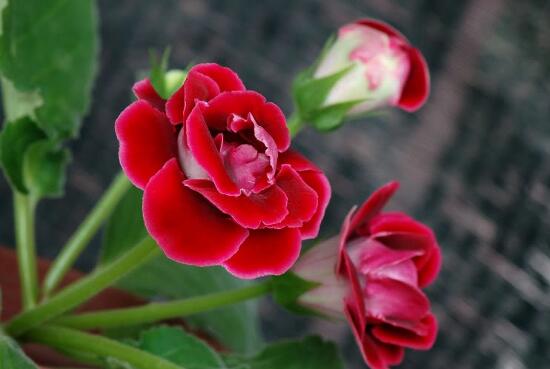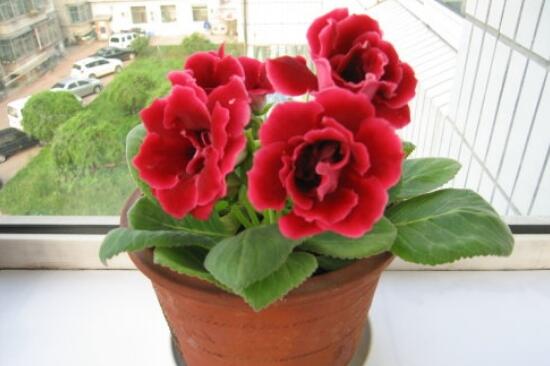How to fertilize the big paulownia, the fertilization method of the big paulownia flower / leaf surface can not be fertilized.
For the pittosporum flower, flower friends should not be unfamiliar, it is a variety of flowers, has a rich color, in the green leaves against the background, it is particularly charming. However, if you want the beauty of the flowering of pittosporum, fertilization is a link that cannot be ignored. How can pittosporum fertilize? The following is a small series of arrangements for the fertilization method of pittosporum flowers, go and see it together!
1. How to apply fertilizer, fertilizer/method

"Crops a flower, all rely on fat head," a saying says the secret of raising good pittosporum flowers_fertilization. However, it is simple to say that when it comes to fertilization, flower friends are easy to make mistakes, either applying less or applying more. Therefore, how to fertilize Dayitong, first select fertilizer, and then master some skills to fertilize, the next small series will be introduced in detail for everyone.
2. Fertilization method of Dayingtong flower (1) What fertilizer does Dayingtong use
According to the experience of flower growers, the fertilizer applied to the pittosporum is constantly changing: after the germination, apply some thin organic fertilizer, mainly potassium, phosphorus and nitrogen; when the leaves grow, apply a little decomposed organic liquid fertilizer; and then in the flower bud stage, apply some fertilizer mainly phosphorus fertilizer. More specifically, let's look down.
(2)Fertilization Management of Pittosporum grandiflorum
1, seedling stage
Just planted under the pittosporum, do not need fertilizer, and so on after it germinates, can be fertilized every 10 days, fertilizer to potassium, phosphorus, nitrogen-based. Specific fertilizer, at this time we can occasionally water a flower more than 1500 times.
2. Change basin soil
When the pittosporum grows out of flower buds, everyone should change the pot soil for it. The flowerpot uses the pot of 18 centimeters, the soil uses: 3 parts of rotten leaf soil, 1 part of river sand, 1 part of pearlite and a small amount of finely divided, dried and decomposed poultry manure mixed culture soil.
3. How to fertilize long-leaf pittosporum
Fertilization should be applied once a week from the early stages of leaf growth to the flowering stage of pittosporum. The fertilizer is mainly thin and decomposed organic liquid fertilizer, and the specific potassium dihydrogen phosphate can be used 1000-1500 times or Huaduo No.15.
(3)When is the fertilizer available?
How to apply fertilizer? The above has introduced the amount of fertilizer and the interval of fertilizer application. When will the fertilizer be applied to the pittosporum? In this regard, we should take the soil as a reference. If the soil is wet, fertilization should be carried out two days later, so that the soil can be fertilized when it is dry.
(4)Can you apply fertilizer to the leaves of Dahongtong? No
Many people think that after knowing the fertilizer, they can choose the right time to fertilize, but this is obviously the wrong way to do it. Fertilize the pittosporum flower, do not splash on the leaves, spray water after each fertilization to keep the leaves clean. In addition, the leaves of globeflower should not be stained with water, so clean the leaves thick, and immediately dry the leaves to prevent decay.
In general, as a common flower, the cultivation method of globeflower is not difficult, but if you want to raise it well, you must pay attention to fertilization, and it is best to strictly follow the above requirements. Only in this way, your pittosporum can bloom beautiful flowers. As for the fertilization method of globeflower, Xiaobian introduced it here, hoping to bring help to everyone.
How to cultivate, cultivate and pay attention to the cultivation methods of Dahongtong flowers/Xi Banyin
Pittosporum, a beautiful flower, it leaves luxuriant green, colorful flowers, raised at home very ornamental. In life, because of the strong effect of pittosporum, many people want to raise it, then how to raise pittosporum? The following is a small series of carefully organized cultivation methods and precautions for pittosporum flowers, very detailed, friends who want to raise must see oh ~
How do you know about the flowers and how to grow them?
Pittosporum grandiflorum likes high temperature, moist semi-shade environment, it is not cold-resistant, avoid direct sunlight, in indoor cultivation, it should be placed in semi-shade, moderate watering, and in winter to do warm measures. As for cultivation soil, it is best to loose fertile, humus-rich slightly acidic soil. So how do you raise a rock flower? It was very simple. He could satisfy its growth habits.
Second, the cultivation methods and precautions of the pitaya flower
1. Soil
How to raise a large rock tung flower, first of all, you should re-elect the basin soil. Nowadays, the potted plants of flower friends are basically purchased online, but the soil is very cheap, normal maintenance can ensure the growth of plants, but if you want to grow well, it is best to choose soil again.
Soil selection: according to the growth habits of pittosporum, it likes loose fertile, humus-rich sandy soil. In this regard, Xiaobian recommends that you use 1 part pearlite, 1 part river sand and 3 parts rotten leaf soil plus a small amount of decomposed, dried fine poultry manure mixed soil.
2. Light
The growth of plants can not be separated from light, so in the cultivation method of pittosporum, light is an indispensable part. However, pittosporum flower likes semi-shade, avoid strong light, so it is best to put it indoors in semi-shade maintenance.
Note: In summer, flower friends must put potted plants in a ventilated, scattered light place maintenance; in addition, in the flowering of pittosporum, should appropriately extend the shade time.
3. Temperature
How to raise the pittosporum flower, timely adjustment of temperature is also very important. It is understood that the most suitable growth temperature of pittosporum is 10-25℃, we should maintain this temperature, so that the plant leaves grow luxuriantly, green, flowers are large and bright.
4. Watering
Water is the source of life, so watering is a very important part of the cultivation methods and precautions of pittosporum. Pittosporum grandiflorum likes wet environment, often spray water around the plant when the air is dry, and water 1-2 times a day when it is hot in summer.
Note: pittosporum leaves long hair, once stained with water droplets, easy to rot, so watering, can not be to plant flowers, leaves spray water, it is best to use immersion method watering. In addition, watering the pittosporum flowers should not be excessive, otherwise it will cause symptoms such as yellowing of pittosporum leaves and root rot.
5. Fertilization
After watering, let's talk about fertilization, which is also indispensable in the growth process of pittosporum. Pittosporum grandiflorum love fertilizer, in its growth period, it is best to apply thin cake fertilizer water once every 10 days or so. Before flowering, the amount of fertilizer required is large. Fertilizer should be applied once a week. It is best to use decomposed thin organic liquid fertilizer.
Note: To apply fertilizer to pittosporum, be sure not to splash on the leaves, spray water after each fertilization to keep the leaves clean. However, we should also pay attention to the fact that the leaves of pittosporum should not be stained with water, so clean the leaves thick, immediately dry the leaves to prevent decay.
6. Diseases and pests
In the process of cultivation of globeflower, plant diseases and insect pests are inevitable due to various reasons. Among them, seedling damping-off disease is easy to occur in seedling stage, and inchworms often bite buds during growth. Their appearance will affect the growth of Pittosporum grandiflorum. Therefore, once found, to immediately spray control, specific reference can be made to the prevention and control of diseases and insect pests of Pittosporum grandiflorum.
What about the yellow leaves of the giant rock flower? What about the yellow leaves?
Pittosporum davidii, also known as snow mud, originated in brazil. Love warm and humid, good fat. The flowers are big and colorful, and the flowering period is long. A single pittosporum can bloom dozens of flowers. The flowering period lasts for several months from April to November. What about the yellow leaves of the pittosporum flower? What about the yellow spots in the leaves of pittosporum globosum? The following wed114 wedding network Xiaobian brings you detailed content.
What is the matter with the yellow leaves of the giant rock flower?
too much watering
Great rock tung maintenance requirements air humidity, but does not mean to water more, watering uneven, watering too much will cause yellow leaves rot.
hypoillumination
Gretchen likes a semi-shady environment, but it is not completely shaded, and the leaves will change color if they are not exposed to sunlight for a long time.
improper fertilization
When fertilizing, if you accidentally touch the fertilizer on the leaves, it will also cause the leaves to yellow and rot.
What about the yellow spots in the leaves of Dashantong?
Proper watering
Great rock tung should pay attention to less watering, not dry do not water.
In winter, when pittosporum gloeosporium enters dormant period, watering can be stopped.
Do not water the leaves. There are hairs on the leaves of globetree. Watering will cause water stains and rot.
Absorbs enough scattered light
Place the pittosporum in a place where it can absorb scattered light, but avoid direct sunlight. If it is winter seedling stage, it should be fully exposed to sunlight.
Clean leaves after fertilization
After each fertilization, wash the leaves with clean water and wipe them off immediately to avoid leaf decay.
- Prev

How to get through the winter, how to raise / dig out the bulbs in winter and how to plant them in spring next year.
Keeping a large pot of paulownia flowers at home is the practice of many people nowadays, but in winter, once the temperature is lower than 5 ℃, the plant will go into dormancy. Pay special attention to maintenance at this time, otherwise it is easy to raise all kinds of problems. So, how to spend the winter? How to raise paulownia in winter
- Next

How to water paulownia, the watering method of paulownia / see dry and wet / no water on the leaf surface
The big paulownia flower, a common beautiful flower, gives people a sense of petite and exquisite as a whole, and the emerald green leaves and colorful flowers all show a beautiful scene. However, these beauties need us to take good care of them, especially watering. We can't make mistakes. So, how to water paulownia?
Related
- Fuxing push coffee new agricultural production and marketing class: lack of small-scale processing plants
- Jujube rice field leisure farm deep ploughing Yilan for five years to create a space for organic food and play
- Nongyu Farm-A trial of organic papaya for brave women with advanced technology
- Four points for attention in the prevention and control of diseases and insect pests of edible fungi
- How to add nutrient solution to Edible Fungi
- Is there any good way to control edible fungus mites?
- Open Inoculation Technology of Edible Fungi
- Is there any clever way to use fertilizer for edible fungus in winter?
- What agents are used to kill the pathogens of edible fungi in the mushroom shed?
- Rapid drying of Edible Fungi

